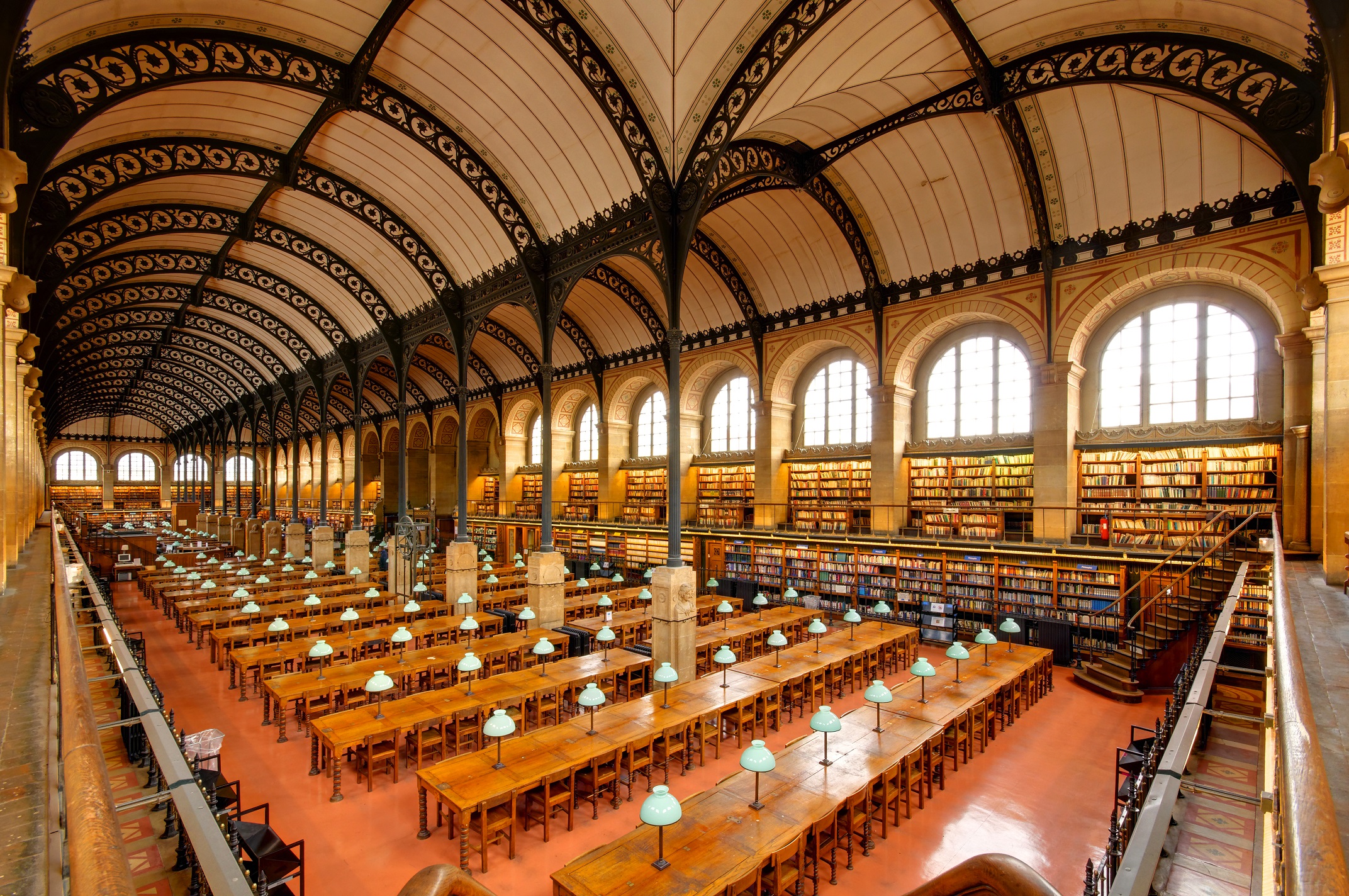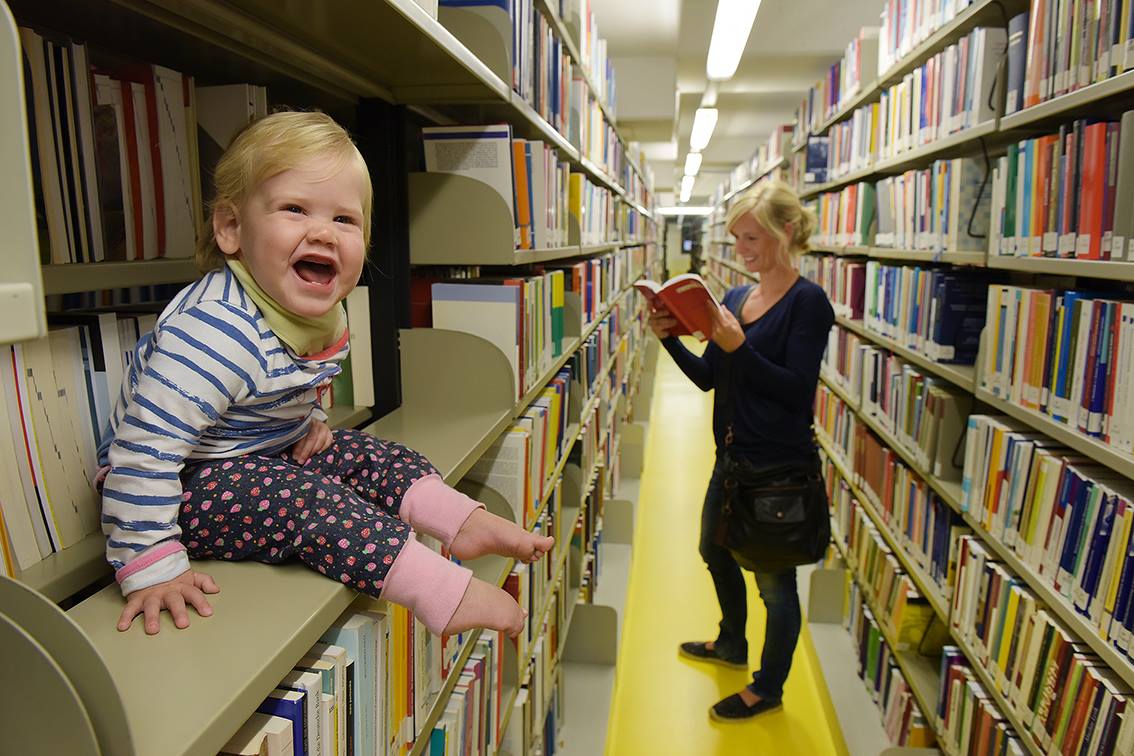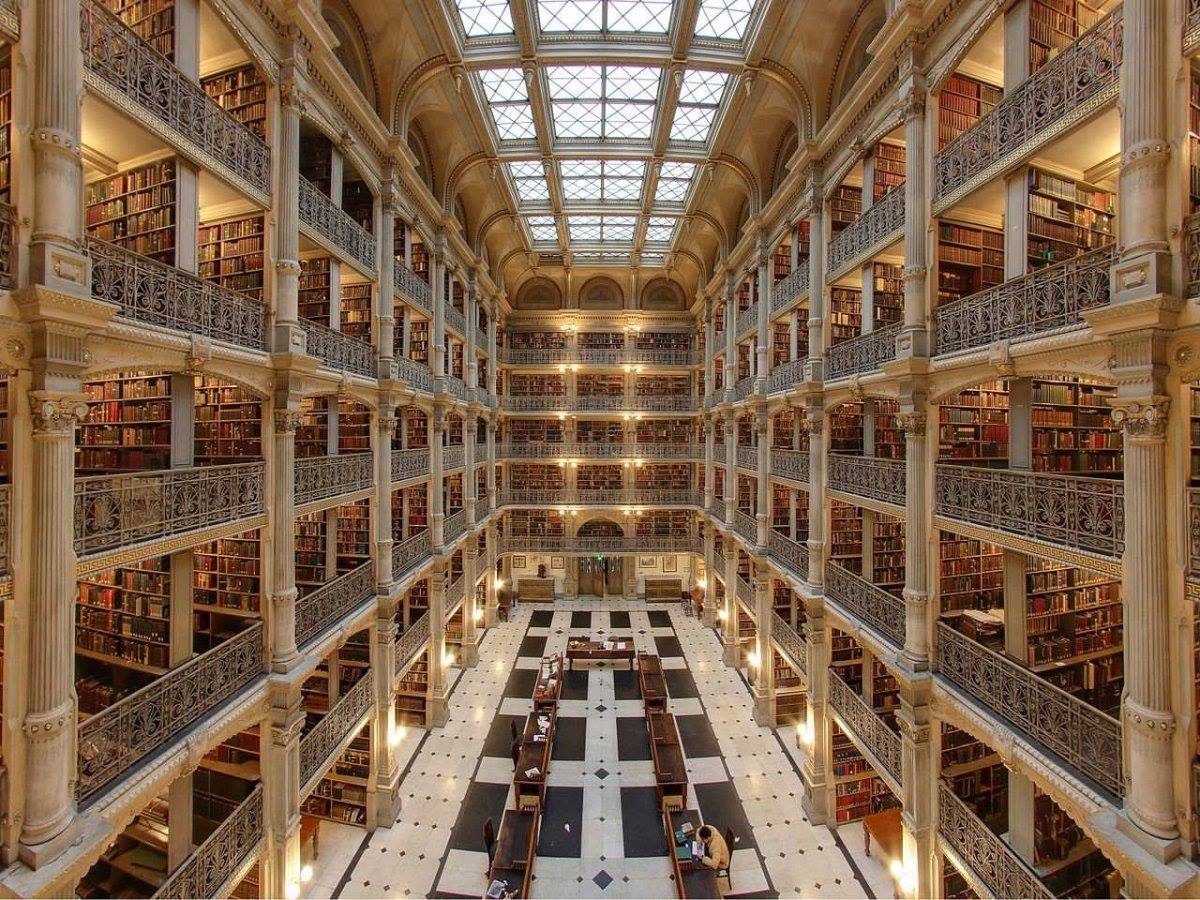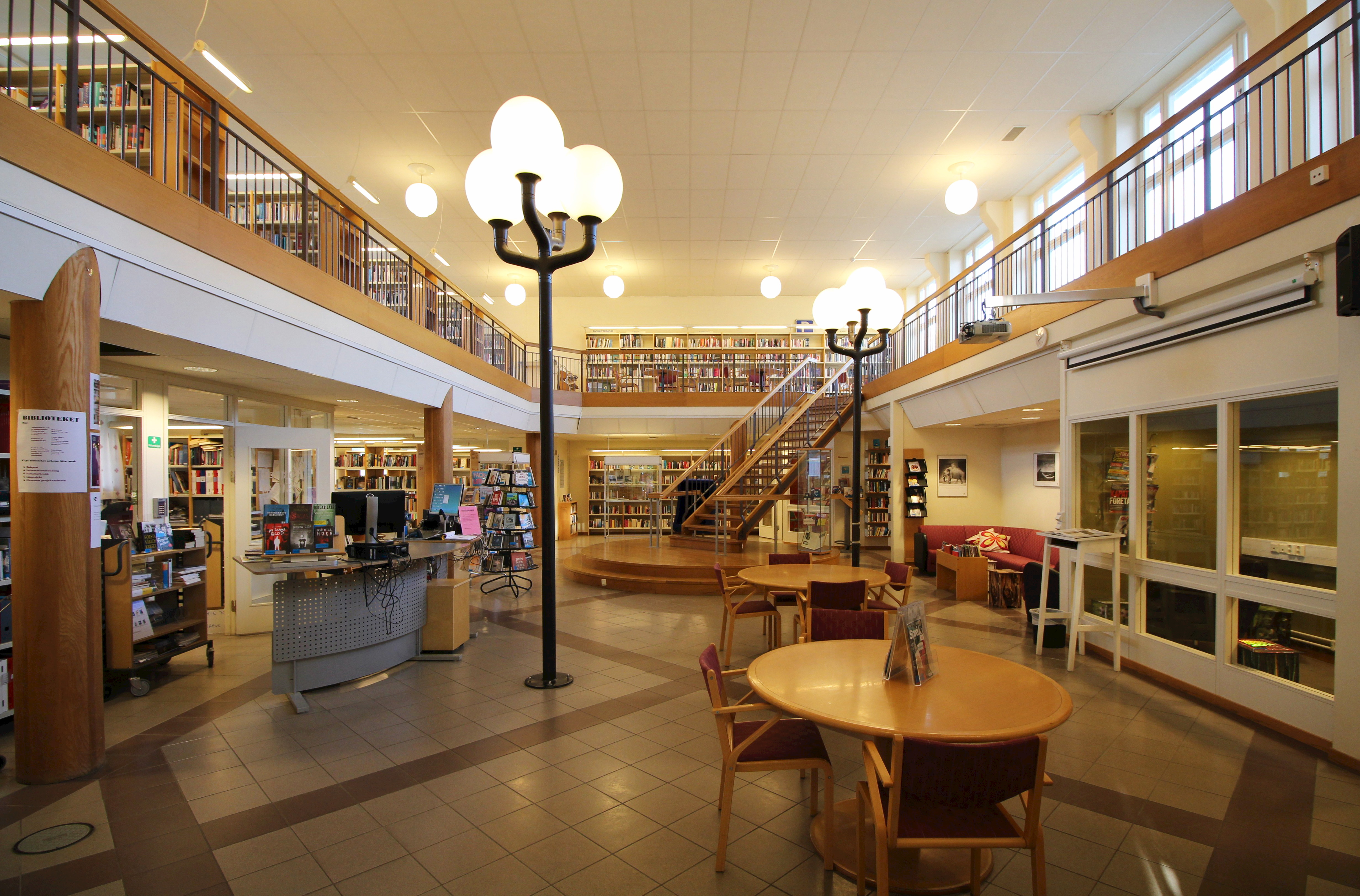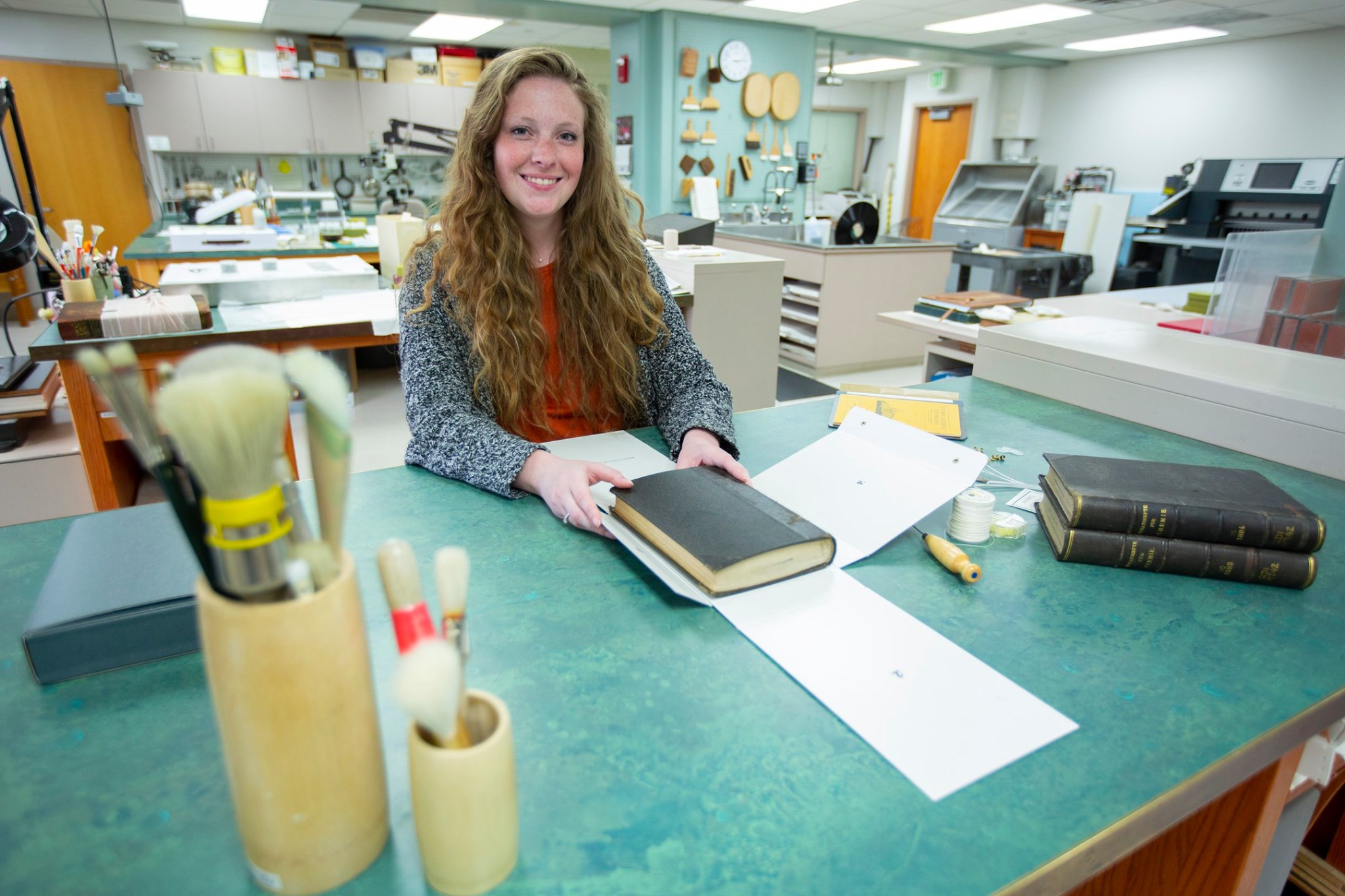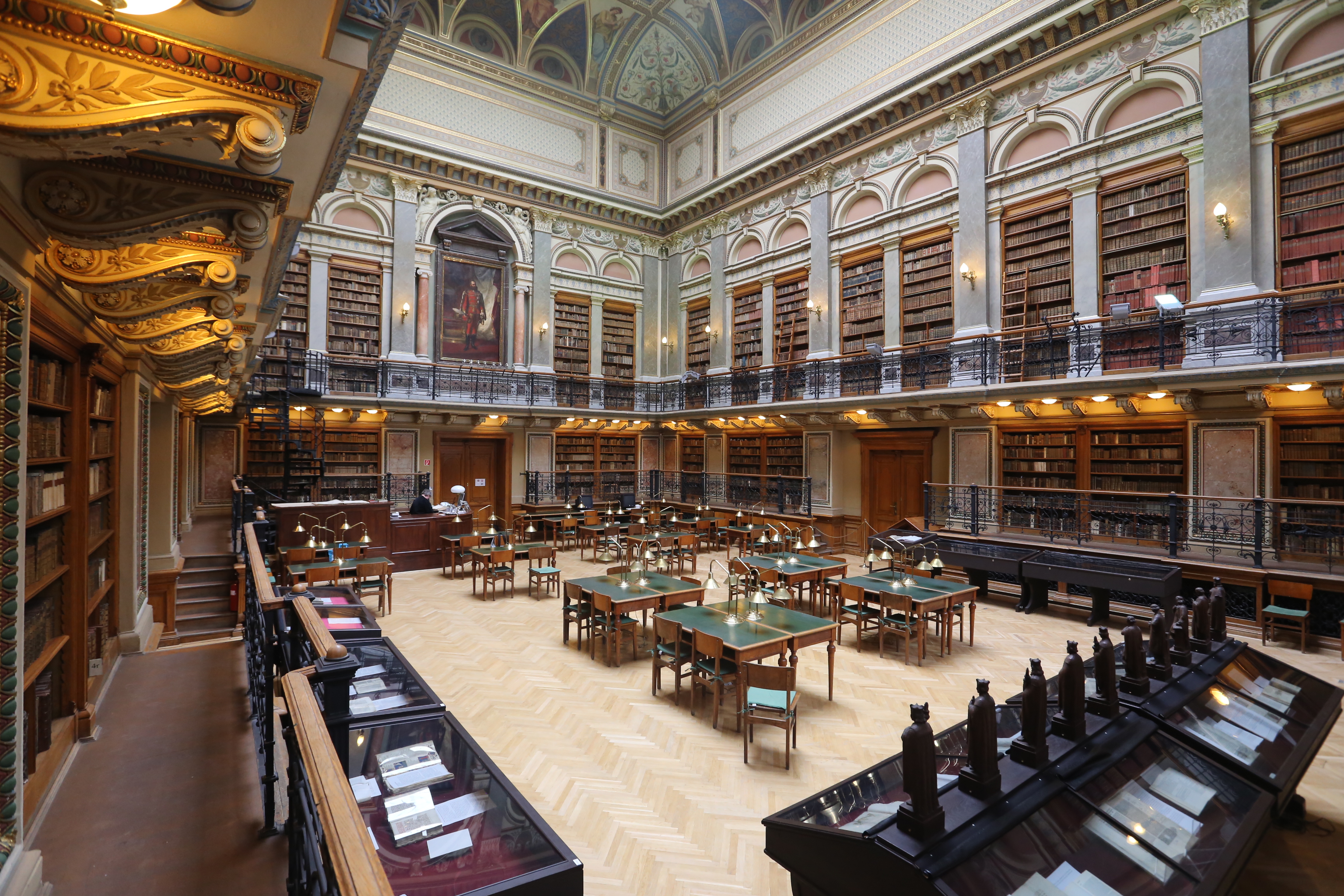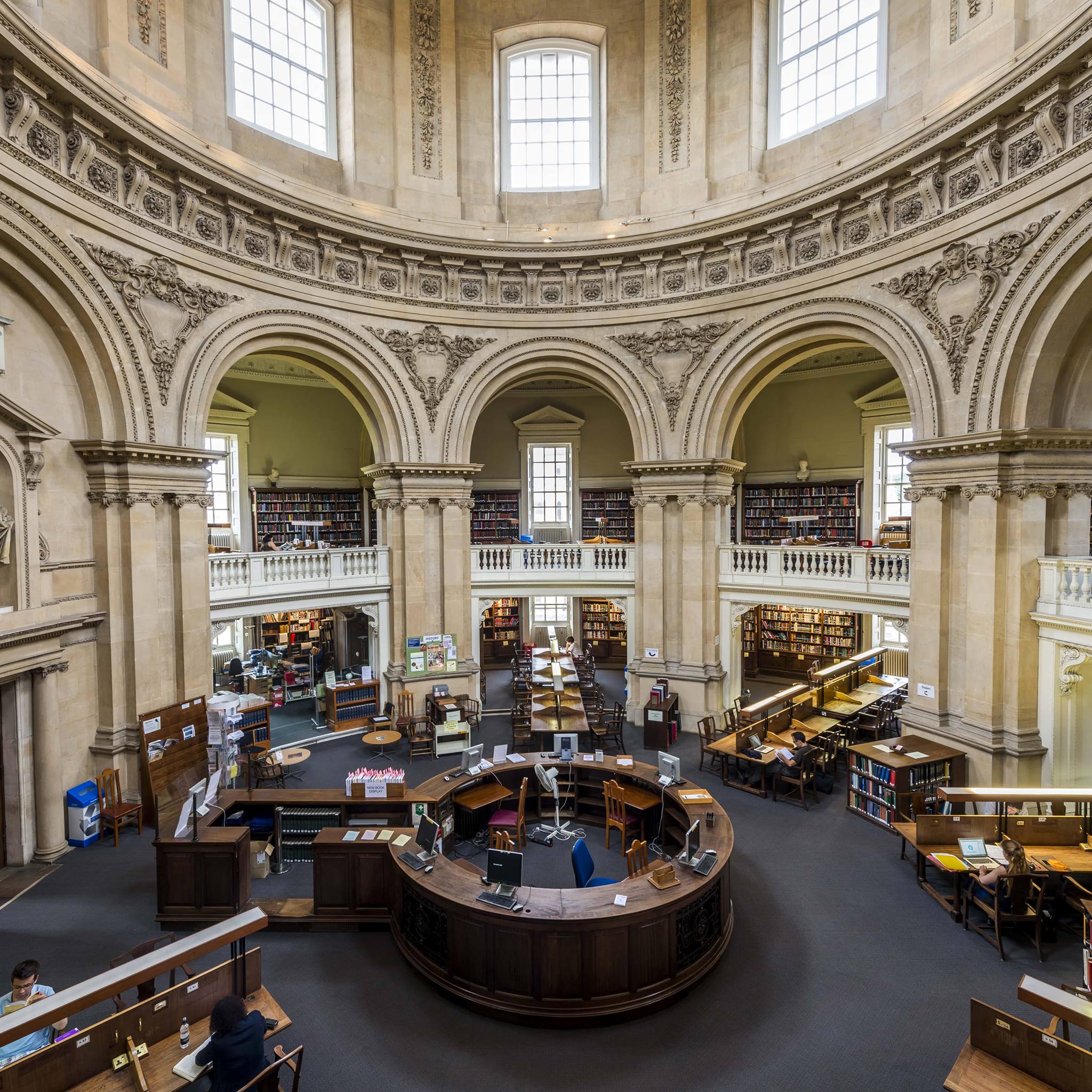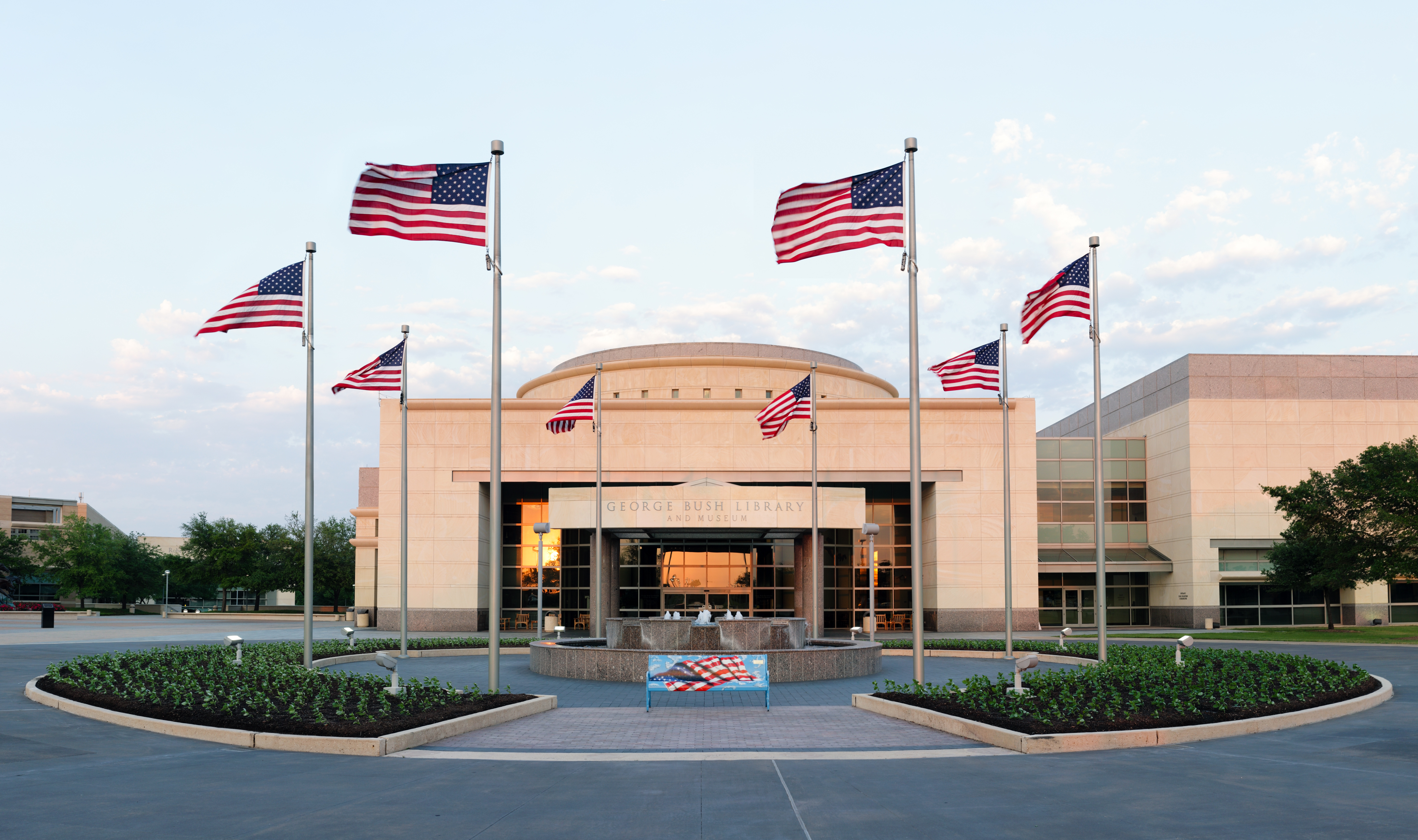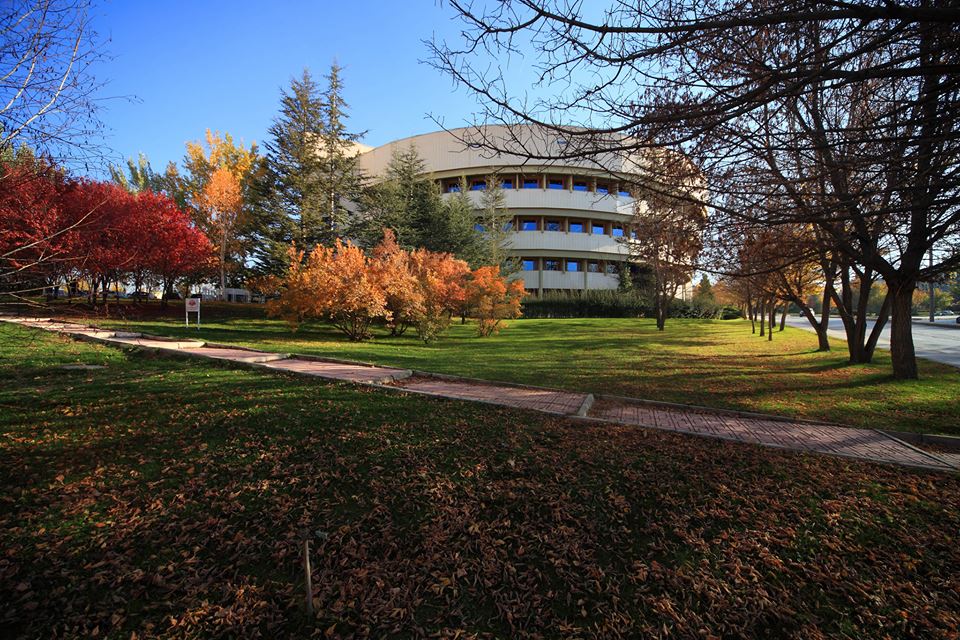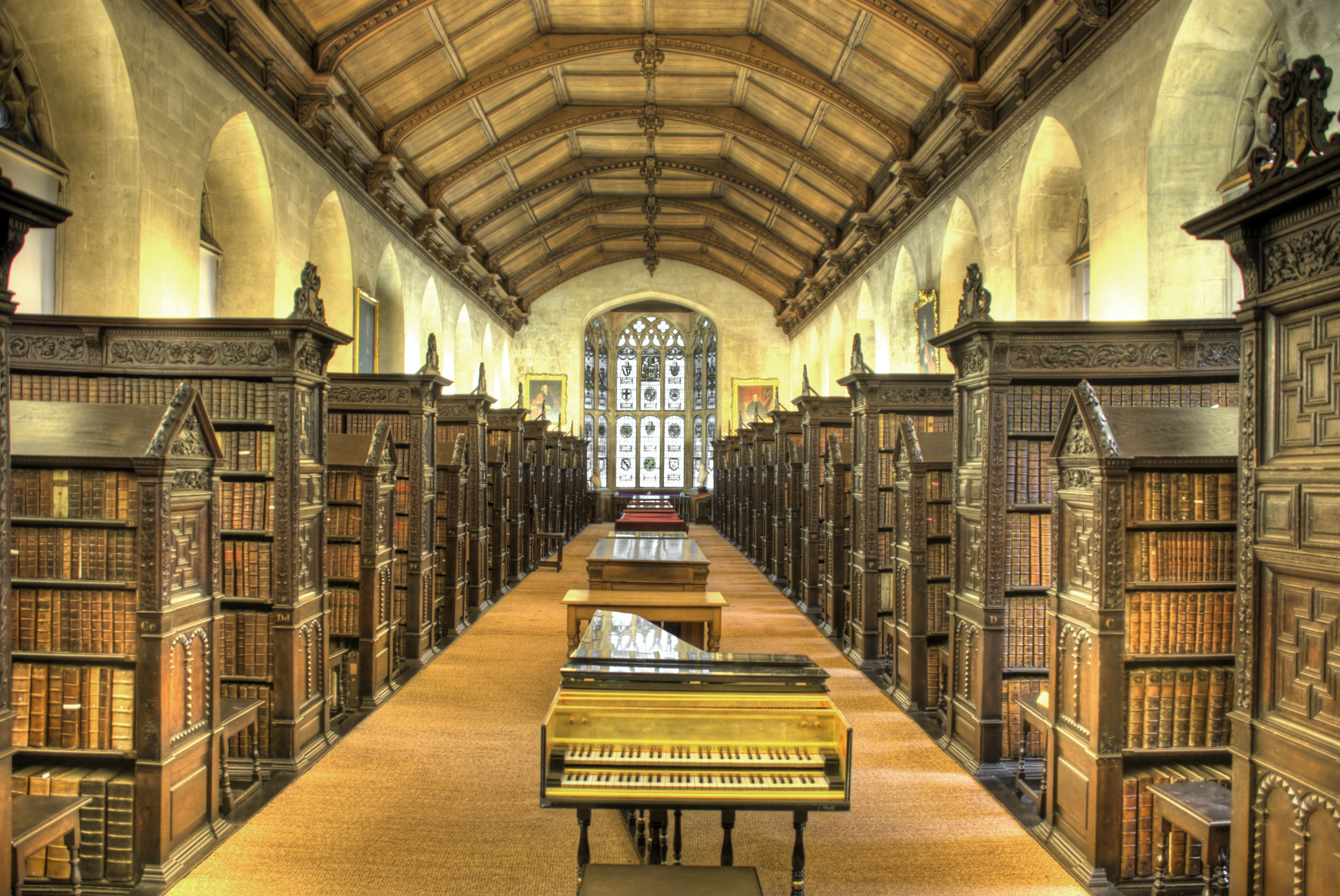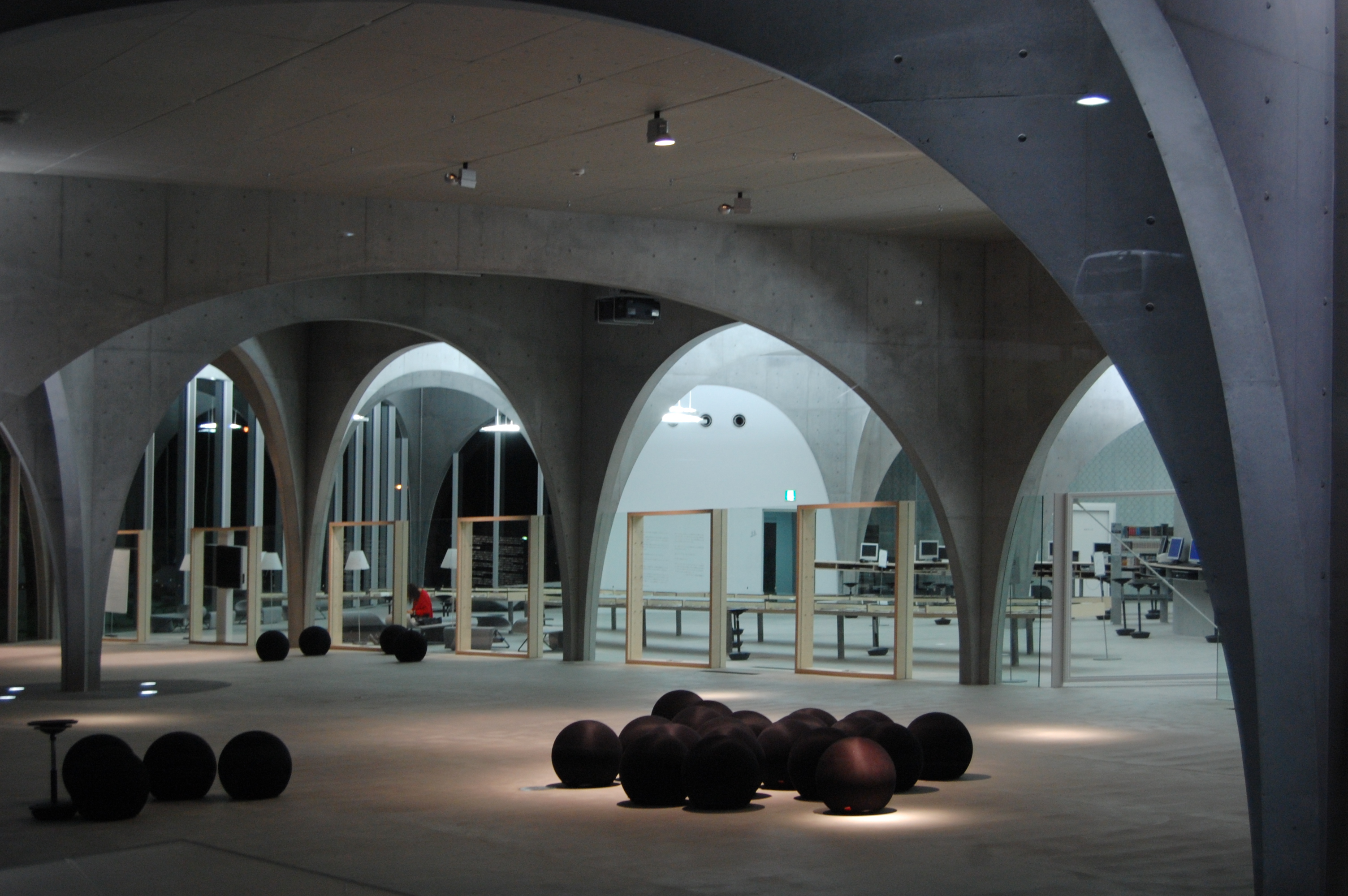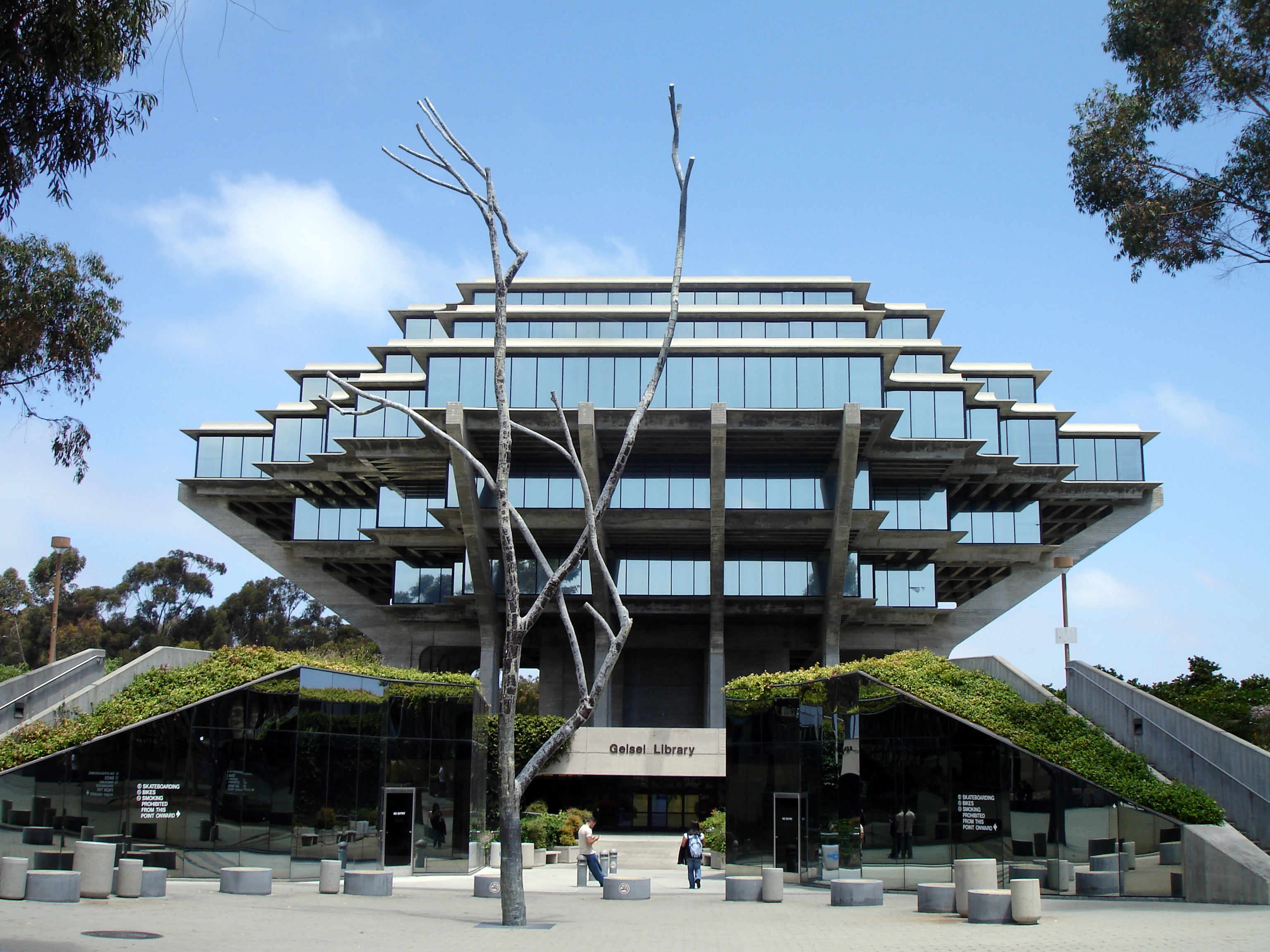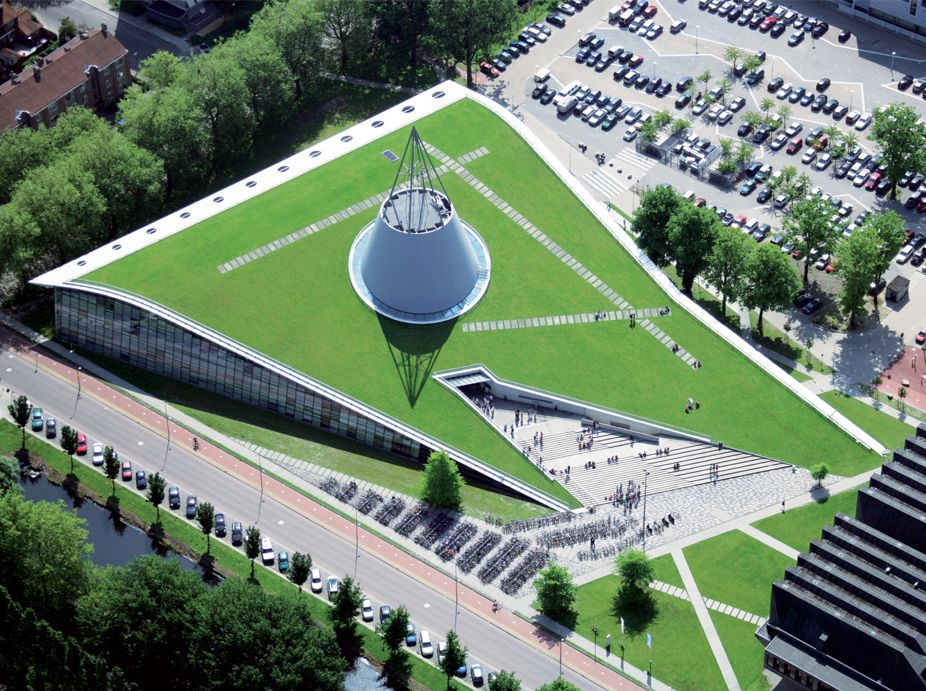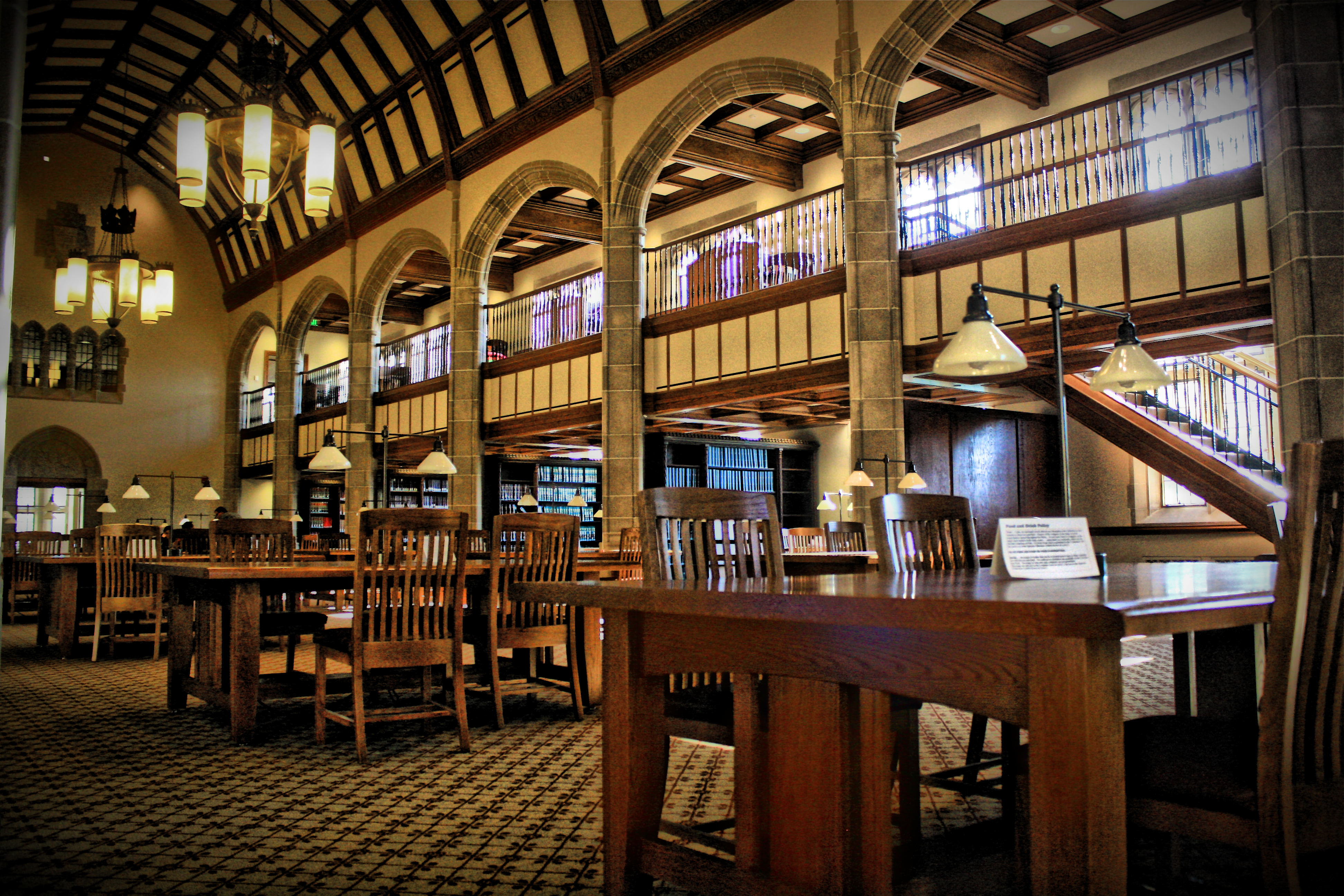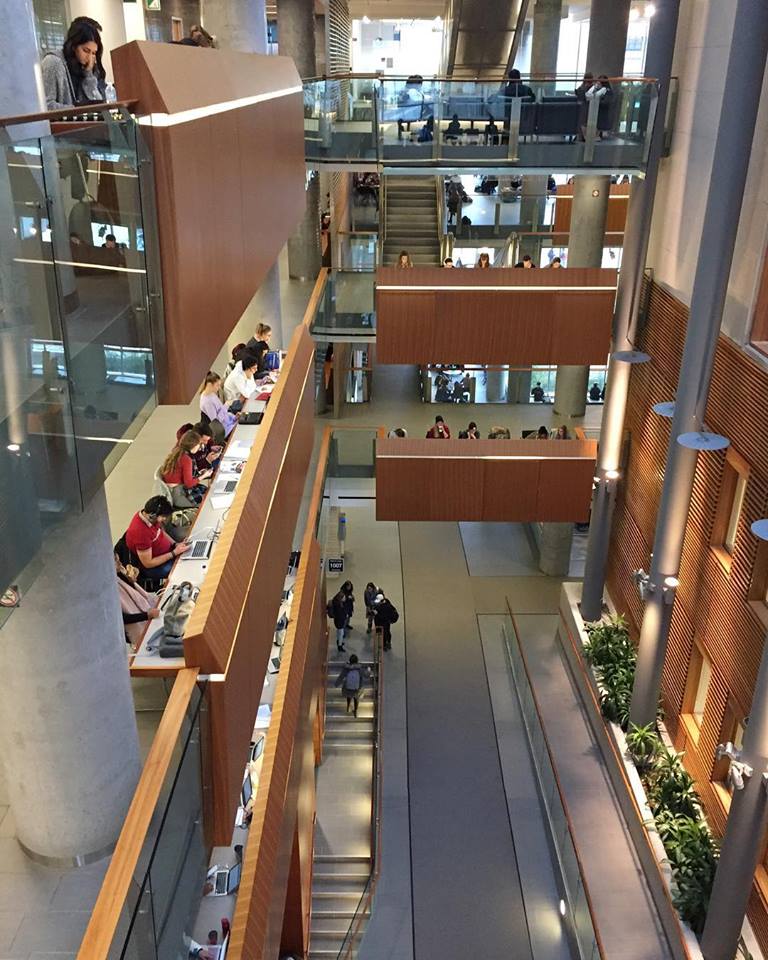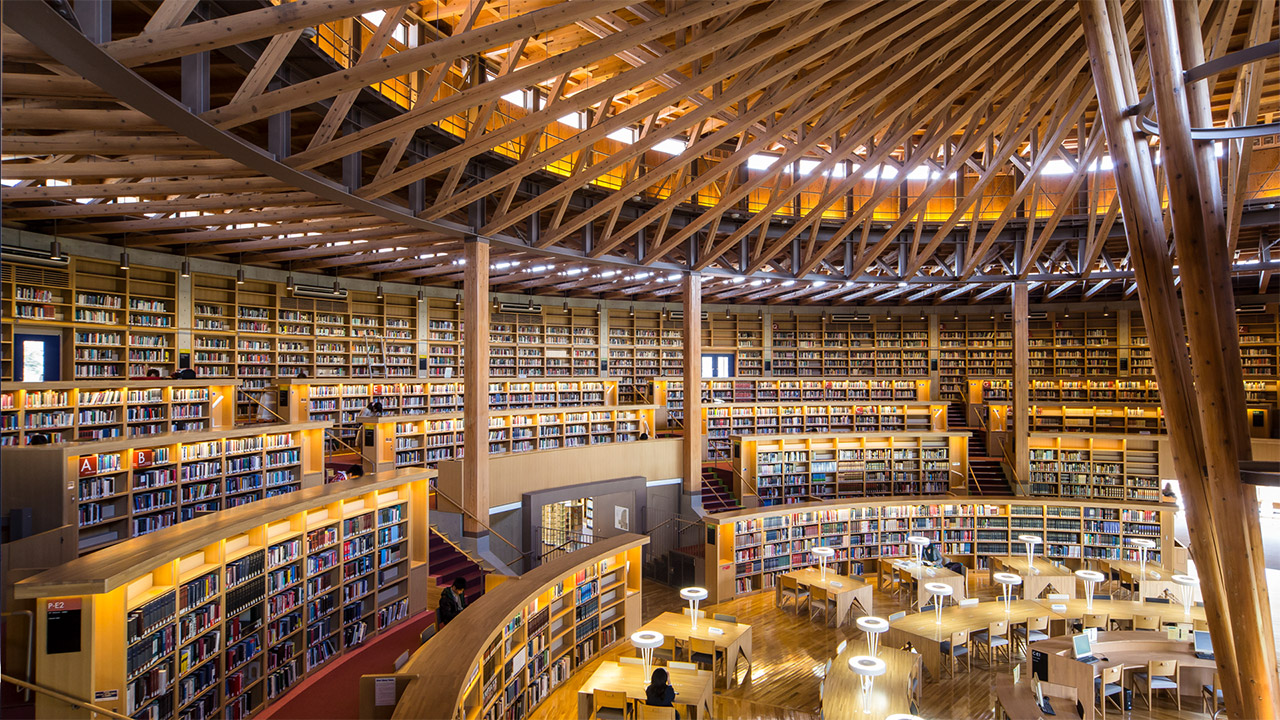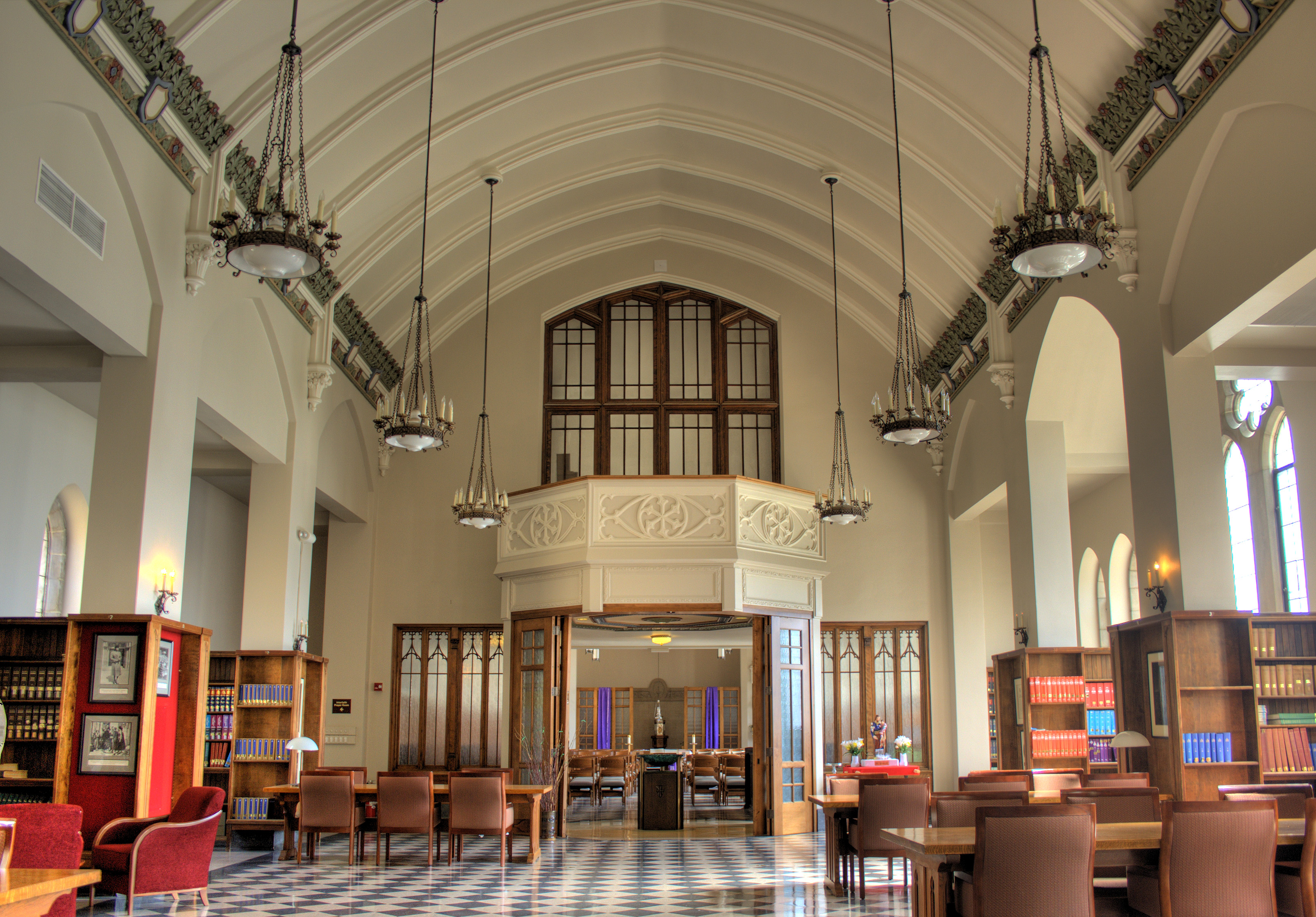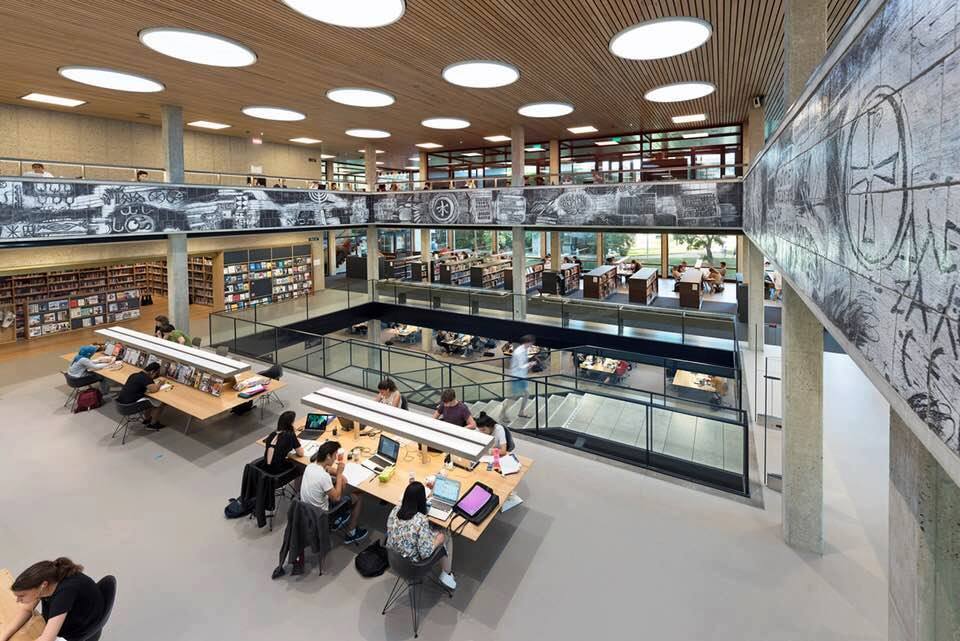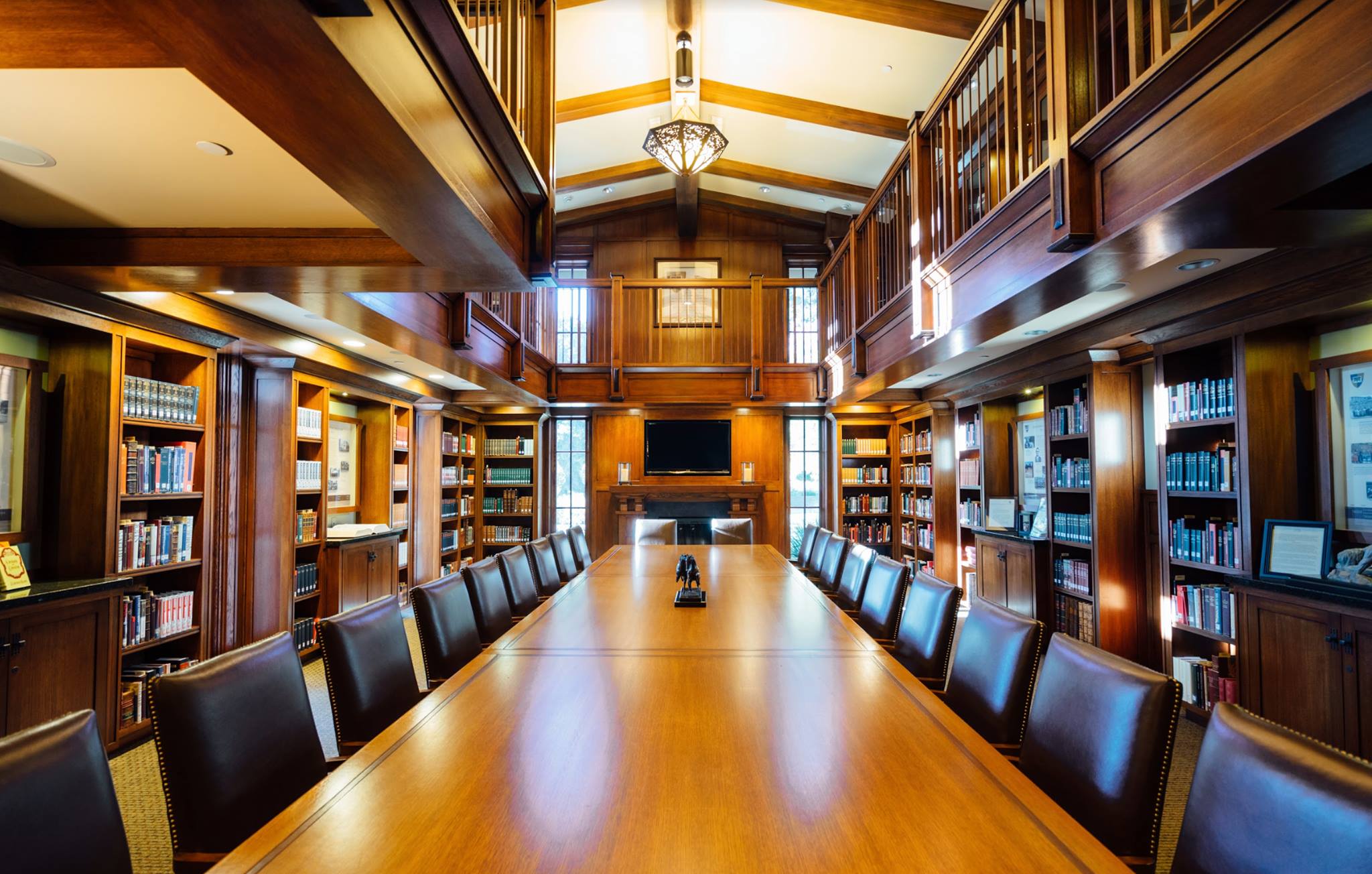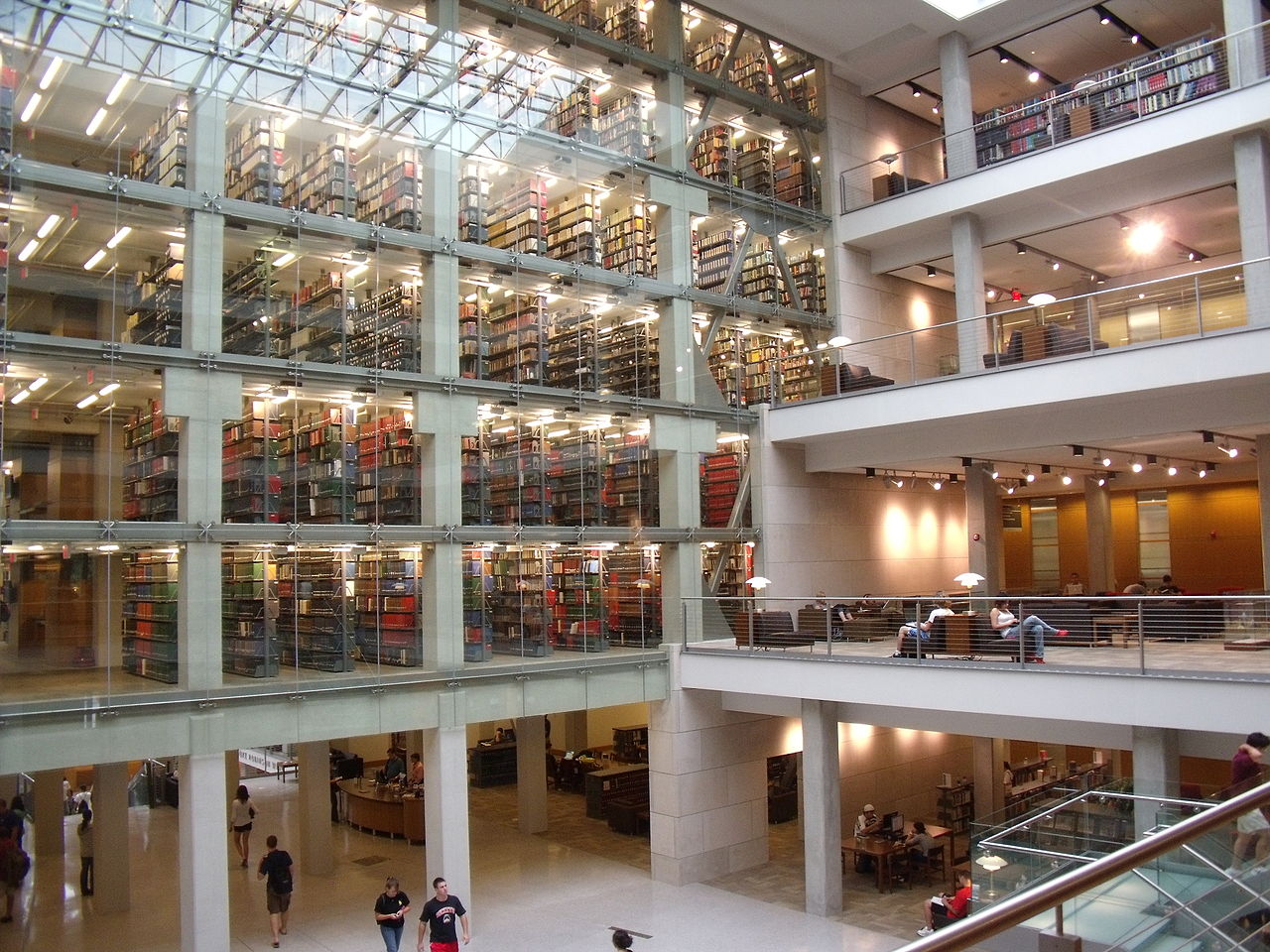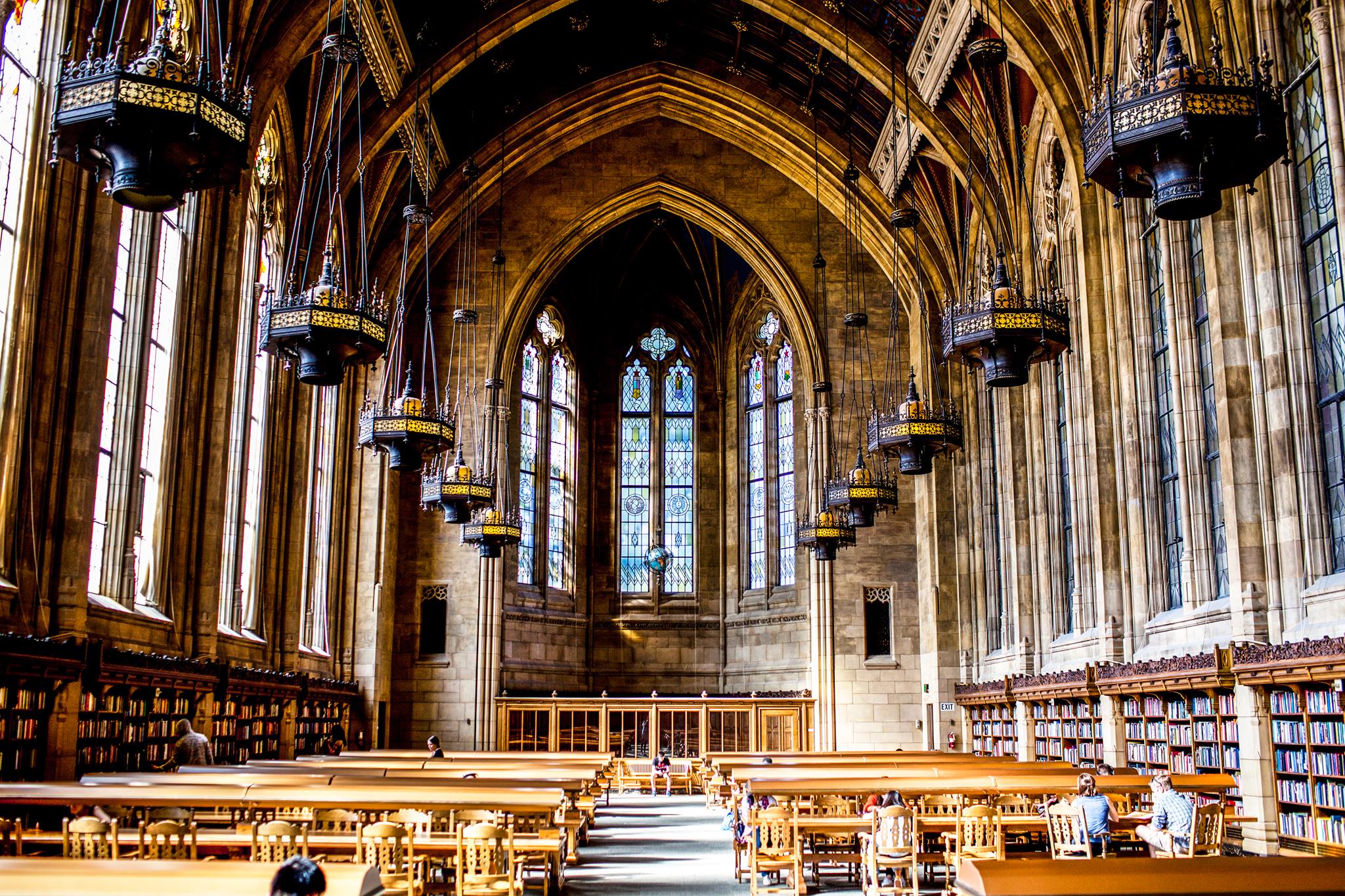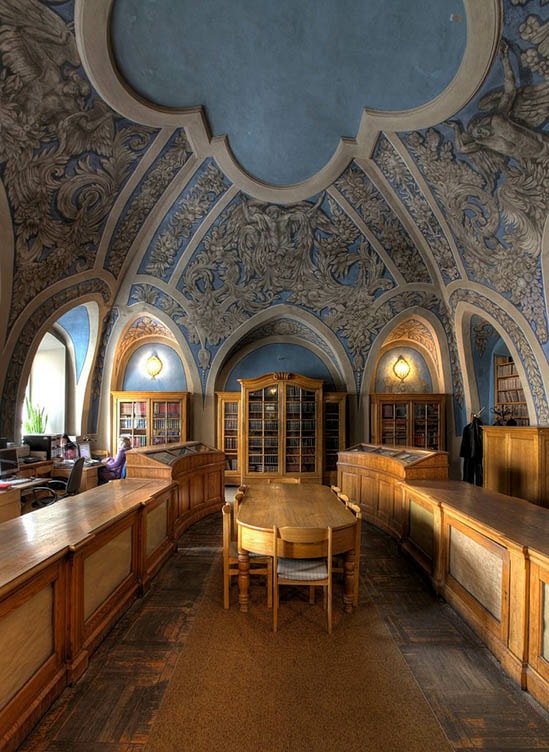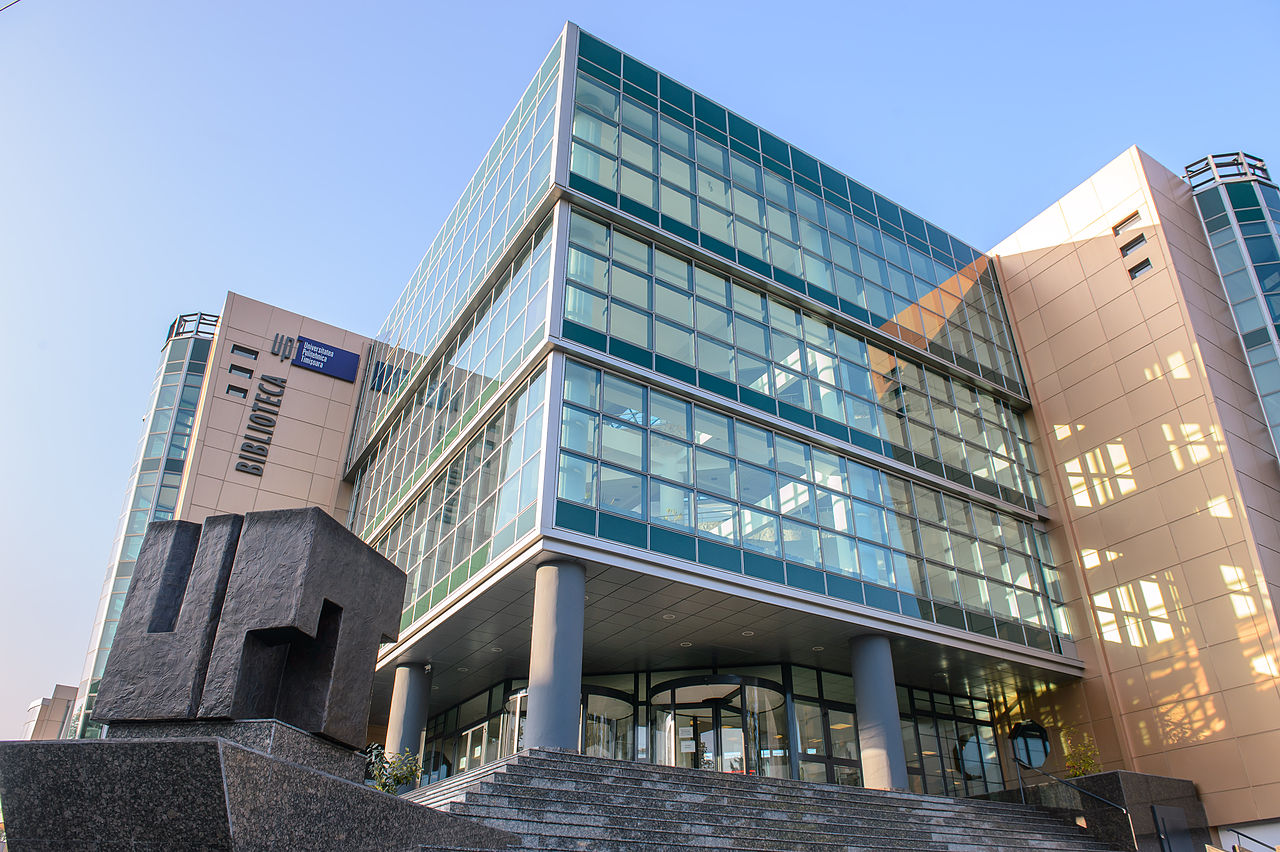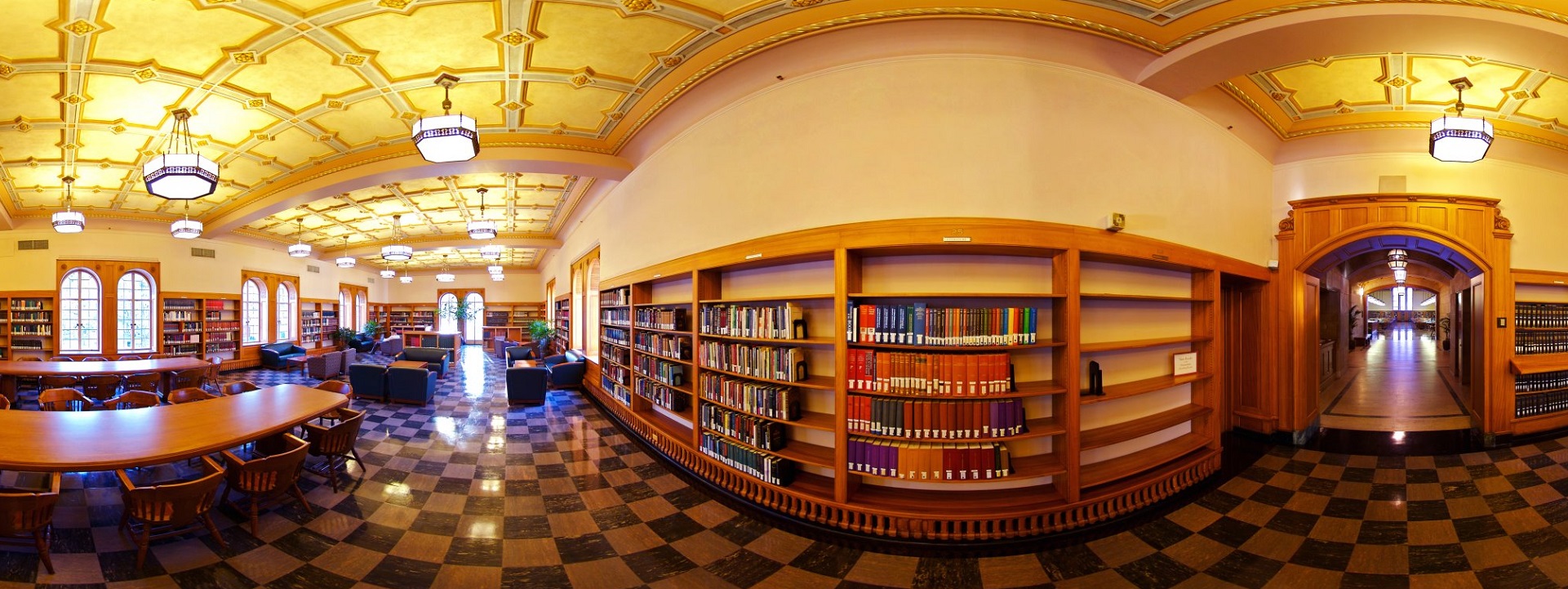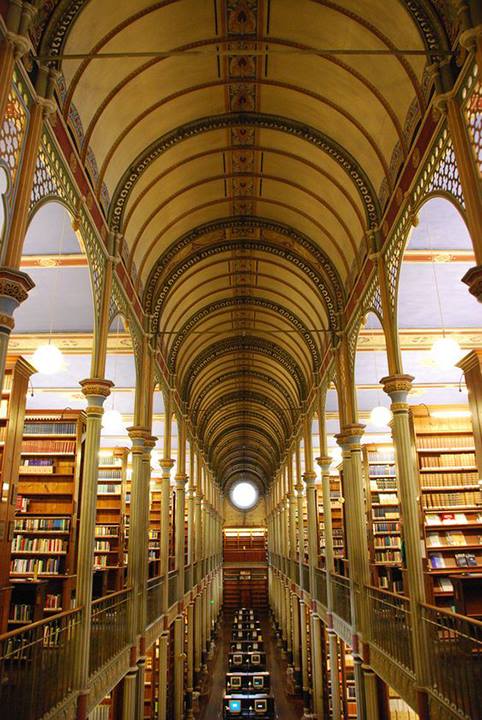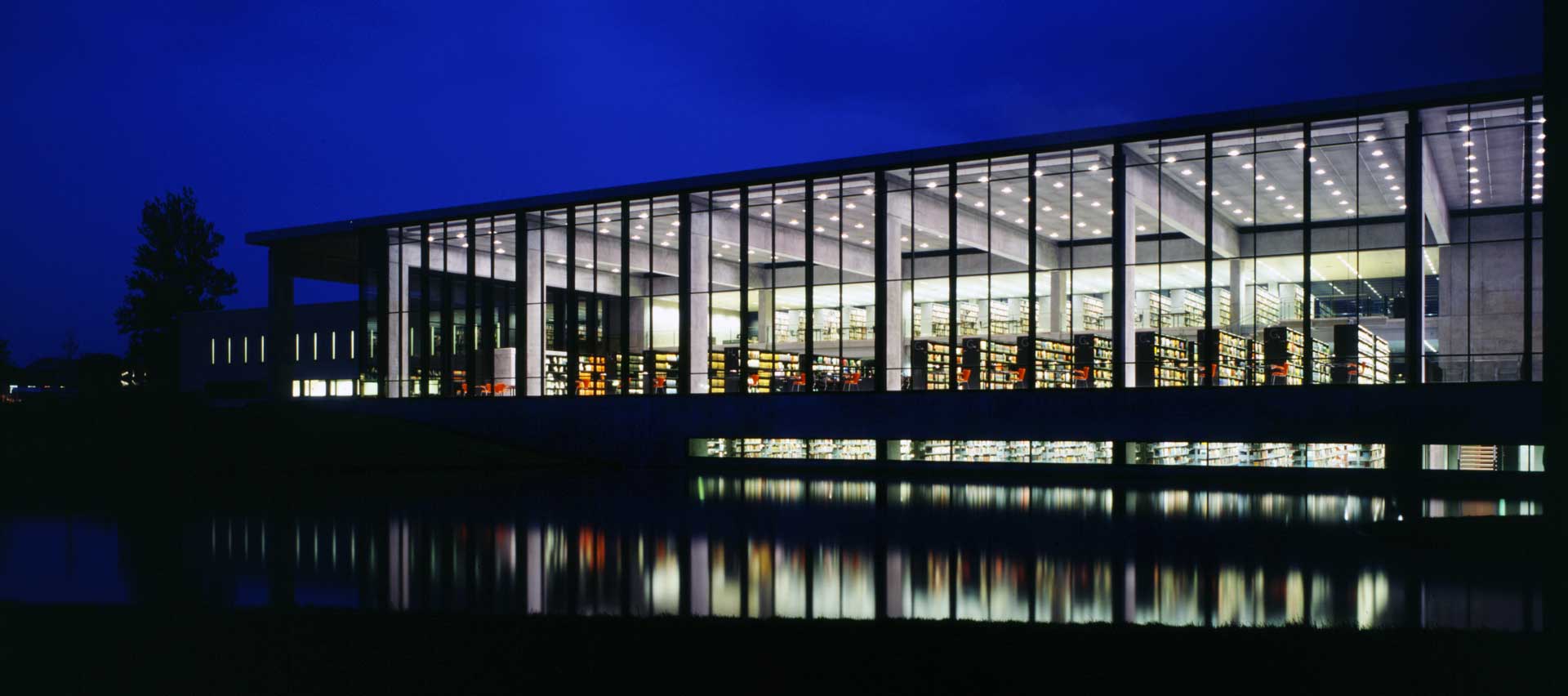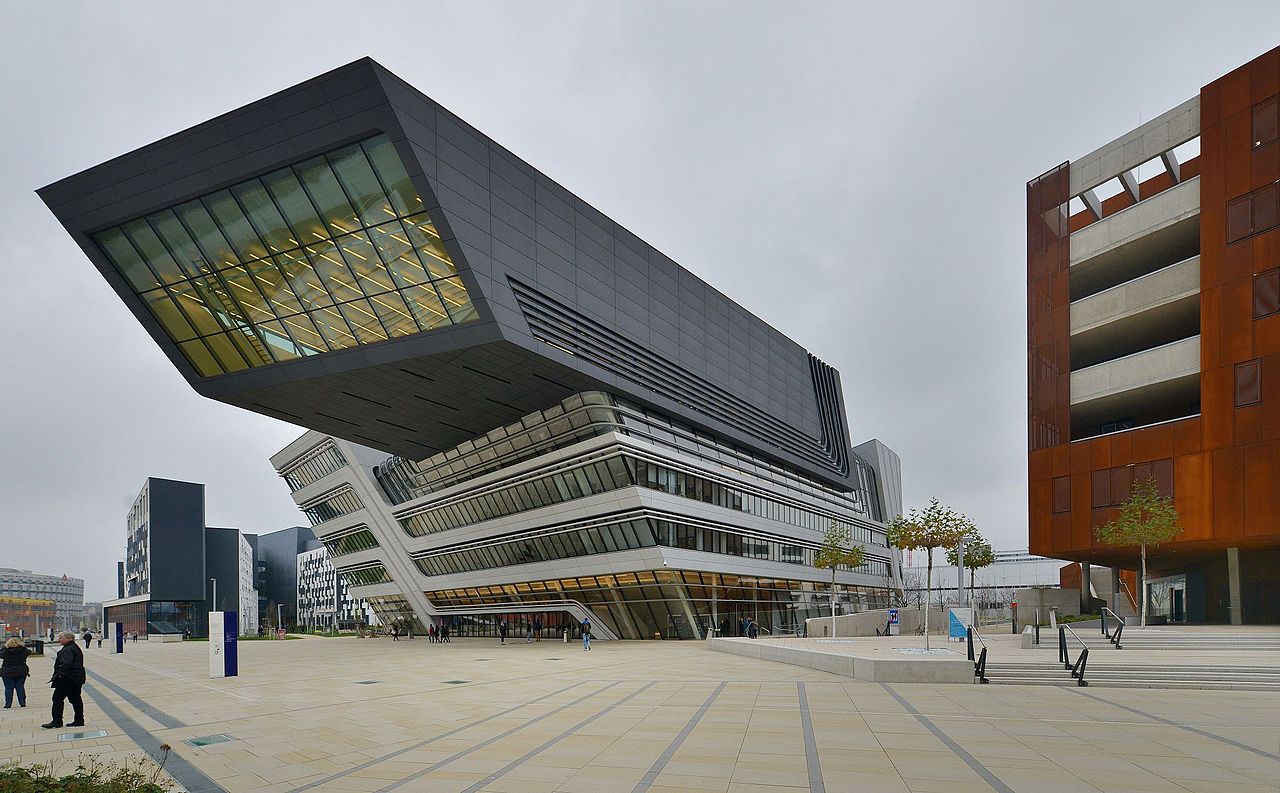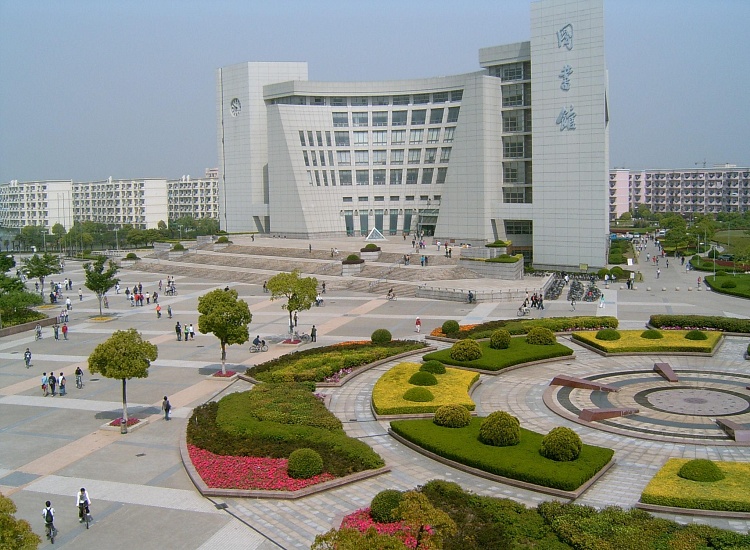“The health of our civilization, the depth of our awareness about the underpinnings of our culture
and our concern for the future can all be tested by how well we support our libraries.”
—Carl Sagan
The founding of many educational institutions throughout the world was marked with the building of a place of worship (LEARN MORE: See College & University Chapels). After the church the library was the second building. It seems likely that after the library the “Media Center” will emerge as the replacement facility category (occupancy classification) in building codes and standards. It will be difficult letting go of the memories and the ambiance of these places and spaces. Who does not have a favorite place in a favorite library?
The original University of Michigan advocacy enterprise presented structural engineering technical committees of the American Society of Civil Engineers with proposals to roll back the live loading criteria for “occupancies formerly known as libraries” — because stacks of books and paper filing cabinets were being replaced with laptop computers. Not only that, stacks of actual physical books in legacy libraries were being relocated off-site to slab-on-grade book warehouses leaving the space to be renovated as study areas or administrative offices.
Those proposals for Table 1607 of the International Building were rejected for lack of technical substantiation. Fair enough. Structural engineering is a fearsome art and you do not want to push too hard on the instincts of structural design professionals even though their risk-aversion instinct is raising cost for new media centers that are mis-characterized as “libraries”. Most standards developing committees are permitted to set their own criteria for technical substantiation. After the desire and obligation to design for public safety it is naive to discount their concern for the cost of professional liability insurance, however. There are times when you are willing to pay for another power of ten safety factor.
The International Building Code Code is deep into its 2021 revision and it appears that some correlation action with ASCE structural engineering codes might have occurred. Rather than risk inaccuracy, we will archive the technical details to the post linked at the bottom of this page. It is often necessary to do this when codes and standards relevant to a given education facility develop out of step with one another.
We will continue following other library-related concepts are listed (very) briefly below:
- Book shelf depth specifications
- Lighting power densities, more occupancy sensors and daylight responsive controls
- Inclusion of libraries in the conditions under which education facilities are used as community storm shelters.
- Metadata (CLICK HERE)
Operating experience, use pattern anecdotes, war stories and such are always gratefully received any day during our colloquia however direct participation in the ICC Code Development Process should always be a first choice. CLICK HERE to get started.
This is the library of the school where I work (it’s also my summer writing office). If I were in charge (which I should be) every kid in the land would have access to a library like this. 📚📚📚❤️ pic.twitter.com/Tb3GIO0zSt
— Annelise Gray (@AnneliseGray) August 16, 2023
The image criteria of our WordPress theme does not permit many images of college and university libraries to be shown fully dimensioned on sliders or widget galleries. We reproduce a few of the outsized images here and leave the complexities of financing, designing, building and maintaining of them in a safe and sustainable manner for another day. If you need specific information please refer to the links at the bottom on this, very long, page.
Click on any image for image credit and other information
University of Southern California![]()
新加坡管理大学 | Singapore Management University![]()
More coming.



